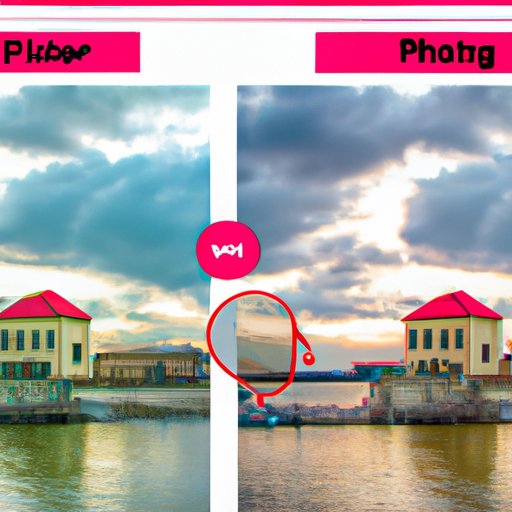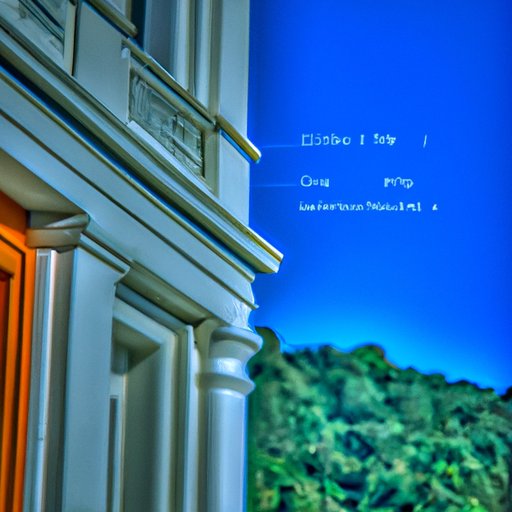Introduction
High Dynamic Range (HDR) photography is a technique that allows photographers to capture details in both bright and dark areas of a scene. This type of photography is often used to capture stunning landscape photos with amazing detail and color. In this article, we will explore what HDR photography is, the benefits it offers, and how to create stunning HDR images.
A Beginner’s Guide to HDR Photography
HDR photography is a great way to take your photos to the next level. Here’s a beginner’s guide to help you get started.
What is HDR Photography?
High Dynamic Range (HDR) photography is a technique that combines multiple exposures of a scene into one image. This technique allows photographers to capture details in both the bright and dark areas of a scene. It is often used to capture landscapes with amazing detail and color.
Benefits of HDR Photography
The main benefit of HDR photography is that it allows you to capture scenes with more dynamic range than what is possible with a single exposure. This means that you can capture details in both the highlights and shadows of a scene, which can result in more realistic and stunning images.
Gear Needed for HDR Photography
In order to capture HDR photos, you will need a digital camera that is capable of taking multiple exposures. You will also need a tripod to ensure that your camera stays steady when taking multiple shots. Finally, you may want to invest in some post-processing software such as Photoshop or Lightroom to edit your HDR photos.

How to Create Stunning HDR Photos
Once you have the necessary gear, you are ready to start creating stunning HDR photos.
Camera Settings
Before you start taking photos, make sure your camera is set up properly. Start by setting the ISO and aperture to the desired values. Then, set the shutter speed to the longest value that still allows you to handhold the camera without blurring the image. Finally, set the white balance to match the lighting of the scene.
Lighting and Scene Setup
When shooting HDR photos, it is important to choose a scene with interesting lighting. Try to find a scene with both bright and dark areas, and make sure there are no distracting elements in the frame. To achieve the best results, try using a graduated neutral density filter to even out the exposure between the bright and dark areas of the scene.
Capturing the Right Image
Once you have your scene setup, it’s time to start capturing the image. Start by taking a few test shots to make sure your camera settings are correct. Once you are happy with the settings, take several shots at different exposures. Make sure to keep the camera as steady as possible when taking each shot. For best results, use a remote shutter release or a timer to minimize camera shake.
An Overview of HDR Photography Techniques
Now that you know how to capture the right image, let’s take a look at the different techniques used for HDR photography.
Tone Mapping
Tone mapping is a technique used to compress the dynamic range of an image. This technique allows you to bring out details in both the highlights and shadows of an image, resulting in a more realistic looking photo. Tone mapping is often used to create surreal looking images with intense colors and contrast.
High Dynamic Range Imaging
High Dynamic Range Imaging (HDRI) is a technique used to capture a wider range of tones and colors than what is possible with a single exposure. HDRI involves taking multiple exposures of a scene and combining them into one image. This technique is often used to create stunning landscape photos with amazing detail and color.
Exposure Blending
Exposure blending is a technique used to combine multiple exposures of a scene into one image. This technique allows photographers to capture details in both the highlights and shadows of a scene, resulting in a more realistic looking photo. Exposure blending is often used to create surreal looking images with intense colors and contrast.
Tips for Capturing the Best HDR Images
Here are a few tips to help you capture the best HDR images:
Use a Tripod
Using a tripod is essential when shooting HDR photos. A tripod will help keep your camera steady while taking multiple shots, ensuring that all of the images are aligned correctly. If you don’t have a tripod, try using a beanbag or something else to stabilize your camera.
Shoot in RAW Format
It is always best to shoot in RAW format when taking HDR photos. RAW files contain much more information than JPEG files, which makes them ideal for editing. This will allow you to make adjustments to the shadows and highlights without losing any image quality.
Take Multiple Shots
When taking HDR photos, it is important to take multiple shots at different exposures. This will allow you to capture more details in both the highlights and shadows of a scene. Make sure to keep the camera as steady as possible when taking each shot to ensure the images are aligned correctly.

How to Edit HDR Photos for Maximum Impact
Once you have taken your HDR photos, it’s time to edit them for maximum impact.
Selecting the Right Software
The first step in editing your HDR photos is to select the right software. Adobe Photoshop and Lightroom are both excellent choices for editing HDR photos. Both programs offer a wide range of tools and features that will allow you to make adjustments to the shadows and highlights of an image.
Adjusting Brightness and Contrast
Once you have selected the right software, it’s time to start adjusting the brightness and contrast of your image. This will allow you to bring out more details in both the highlights and shadows of the scene. Make sure to adjust the levels gradually so that the changes are not too drastic.
Color Grading
Color grading is a technique used to adjust the color of an image. This can be done by adjusting the hue, saturation, and luminance of an image. Color grading can be used to give an image a unique look and feel, or to make the colors more vibrant and lively.

Showcasing Professional HDR Photography Examples
Now that you know the basics of HDR photography, let’s take a look at some professional examples of HDR photography.
Nature HDR Photography
Nature HDR photography is a great way to capture the beauty of the natural world. From lush forests to majestic mountains, nature HDR photos capture the beauty of the earth in stunning detail. Photographers often use this technique to capture the full range of light in a scene, from the darkest shadows to the brightest highlights.
Urban HDR Photography
Urban HDR photography is a great way to capture the hustle and bustle of city life. This type of photography often involves capturing the lights and colors of the cityscape in stunning detail. Photographers often use this technique to capture the energy and vibrancy of a city.
Abstract HDR Photography
Abstract HDR photography is a great way to capture the surreal beauty of the world around us. This type of photography often involves capturing everyday objects in unexpected ways. Photographers often use this technique to create unique and eye-catching images that draw the viewer in.
Conclusion
In conclusion, HDR photography is a great way to take your photos to the next level. By combining multiple exposures of a scene, you can capture details in both the highlights and shadows of a scene. With the right gear and knowledge, you can create stunning HDR images that will impress viewers. So, grab your camera and start shooting!
(Note: Is this article not meeting your expectations? Do you have knowledge or insights to share? Unlock new opportunities and expand your reach by joining our authors team. Click Registration to join us and share your expertise with our readers.)
